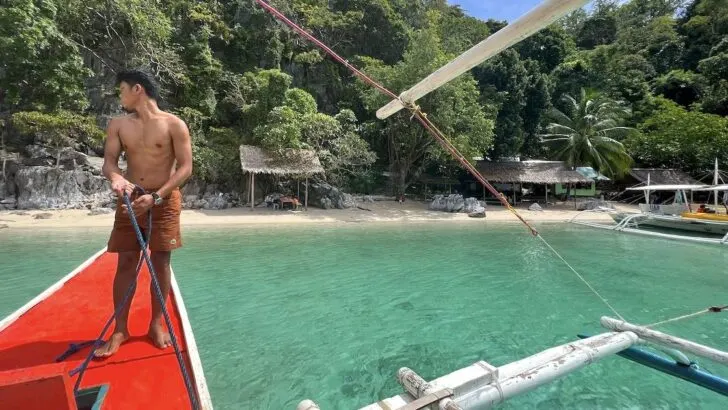Choosing your Coron island hopping tours? You’re going to want to assess all of your options.
With lakes, lagoons, World War II shipwrecks, coral gardens, and handfuls of remote, white-sand beaches scattered around Coron, you do not want to miss anything important – especially when there are so many different tours to wrap your head around.
Located in the northern part of Palawan and with its own small airport, Coron is often the first or final destination on tourists’ Palawan itinerary.
Slightly quieter than El Nido, another popular island tour destination, it is my favourite place for island hopping in Palawan.
Compared to El Nido, the corals in Coron are typically healthier, more colourful, and have a more diverse population of fish. The bay also has a number of World War II shipwrecks, which divers and/or snorkellers can explore.
There are heaps of Coron island hopping tours, enough options to drive you crazy. That’s why my guide explains exactly what you need to know: the difference between group tours and private tours; the most popular routes; and the best Coron island hopping tours for snorkelling, beaches, or visiting lakes and lagoons.
Depending upon which island tour in Coron you choose – or island tours, rather, as the more the merrier – prepare to explore lakes, lagoons, sandbars, coral gardens, shipwrecks, and remote beaches surrounded by limestone cliffs and palm trees.
Before you visit Coron, read up on what to wear in Palawan and while island hopping too.
I also have a full guide to island hopping in Palawan, in case you’re looking for the best island hopping destinations in the area and where to visit next.
Where is Coron?

Coron is an island in the northern part of Palawan in the Philippines.
The Philippines has over 7,641 islands, and yet, Coron is a stand-out. It has translucent, turquoise lakes, vibrant coral gardens, sunken World War II ships, white-sand beaches, and limestone cliffs (the limestone in Coron even has a name: Coron limestone).
Coron is also the name of a town on the same island, which is also referred to as Coron town proper. Coron town is more of a fishing village really, with a small port.
Positioned next to Mount Tapyas, the town has become the main hub of the island. Coron island hopping tours depart from the port in Coron town proper.
ESCAPE CHEAT SHEET
Planning your big escape? These are the booking resources I return to time and time again.
Book your hotel or hostel on Booking.com or Hostelworld.
Protect against accidents and emergencies with insurance from Staysure or SafetyWing.
Find a tour or experience on Get Your Guide.
Travel the world for free with TrustedHousesitters.
Is Coron worth visiting?
In Coron, you’ll soon find yourself sailing between limestone islands and barely-scathed beaches.
Every now and then, you’ll pull up to the islands to kayak or swim around deep, turquoise lakes and lagoons. At other times, you’ll stop over a coral garden or a World War II shipwreck to snorkel.
If that sounds like a day well-spent, Coron is absolutely worth visiting.
Island hopping is the main attraction in Coron, as the town is surrounded by a number of gorgeous limestone islands and islets with lagoons, lakes, coves, and coral reefs.
However, there are also things to do closer to the town, including climbing Mount Tapyas for a view over the bay or visiting the local hot springs.
How many days is enough for Coron Palawan?
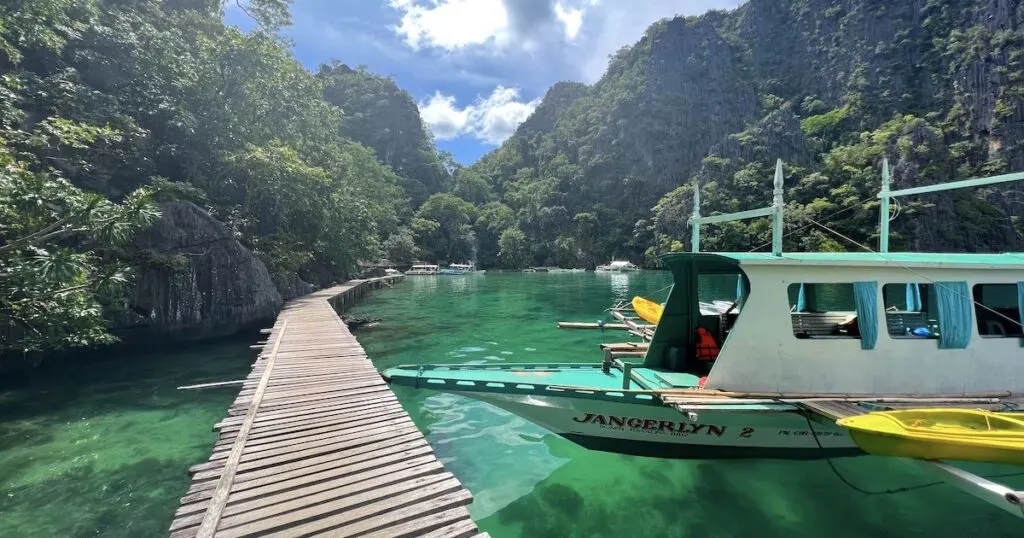
The best amount of time to spend in Coron in Palawan is between two and five days.
Two days is the minimum amount of time you’ll need in Coron. This allows you to take at least one or two Coron island hopping tours and, if you’re not too tired in the evening, to climb Mount Tapyas and visit the hot springs.
There are four main island hopping tours in Coron (A, B, C and D), each taking one full day to complete. If you don’t want to miss a beat – or rather, a coral reef – factor in four or more days to fully explore Coron.
Up to five days is ideal if you want to take more than one or two Coron island tours. You can also take your days at a slower pace.
If you want to explore outside of Coron town and the wider Busuanga Island (on which Coron town proper is based), you will need to put aside more time. Either employ a driver or rent a scooter if you’re confident to drive.
How to get to Coron
If you’re visiting Coron, it’s likely that you’re either A) Beginning your Palawan itinerary in Coron and working your way from north to south, or B) Visiting Coron after visiting El Nido and/or Puerto Princesa and other destinations in the south of Palawan.
If Coron is your first destination in Palawan, you will need to take a flight from Manila (or another city in the Philippines with domestic connections, such as Cebu) to Coron airport.
Coron airport is a very small airport, half an hour’s drive north of Coron town. Once upon a time, in 2018, when I first visited Coron, taxi drivers flocked new arrivals as soon as they exited the airport doors.
Nowadays, things are far more relaxed. This time, as soon as you walk outside, one mini-van driver will ask you which hotel you’re staying at. There are several buses waiting to whisk new arrivals away to their respective areas in Coron town. The official will direct you to the correct bus for your hotel.
They charge a fixed price under the direction of the government, so don’t bother trying to haggle the price down. A one-way ticket costs 150 PHP (£2.10).
If you’d rather not share a mini-van with other people, which will involve waiting for passengers to be dropped to their respective destinations in the town, you can order a private Coron one-way airport transfer instead.
How much is island hopping in Coron?
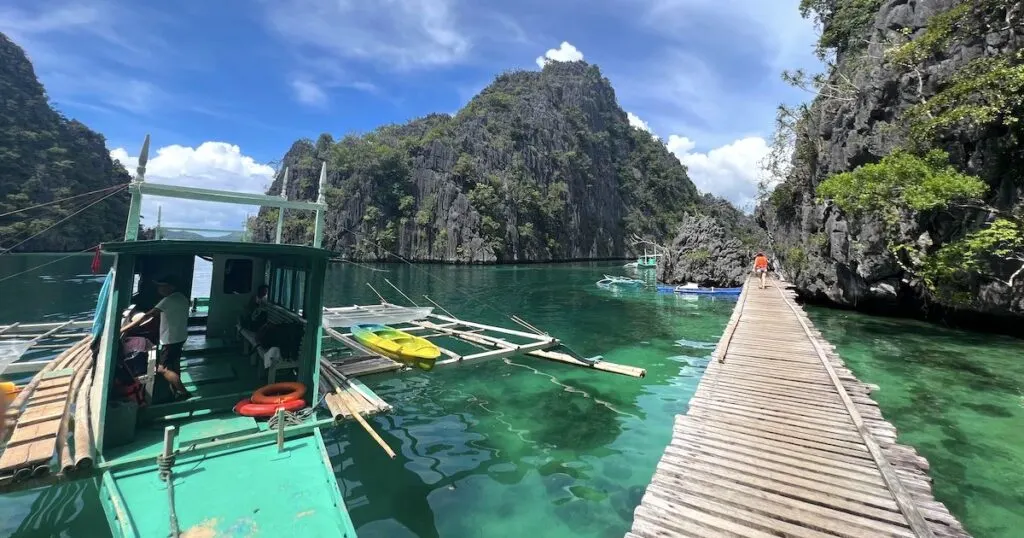
Coron island hopping tours are the cheapest when you book a group tour. Group tours cost approximately 3000 PHP (£40). Group tours can be booked online or through your hotel or hostel.
Private island hopping tours in Coron cost approximately 5,000 to 7,000 PHP (equivalent to £60 – £100). The individual price person depends upon the route and the number of people in your group. If you have a larger group, the cost will be less per person.
Entry fees for Coron Island Hopping Tours
The main attractions in Coron require an entry fee. The fee goes towards supporting sustainable tourism and keeping the area clean and free from pollutants.
The entry fees may or may not be included in the cost of the Coron island hopping tour. This is something you will need to check when you book your tour.
The entry fees are approximately as follows (per person):
- Twin Lagoon: 200 PHP (£2.80)
- Kayangan Lake: 300 PHPS (£4.20)
- Twin Lagoon: 200 PHP (£2.80)
- Banana Island: 150 PHP (£2.10)
- Malcapuya Island: 250 PHP (£3.50)
- Siete Pecados: 100 PHP (£1.40)
- Banul Beach: 150 PHP (£2.10)
- Skeleton Wreck: 150 PHP (£2.10)
Types of Coron Island Hopping Tours
1. Coron island hopping tours by a private boat

A private tour gives you the privacy and the freedom to do what you choose. This will be especially helpful if you are travelling as a group of friends, a family, or as work colleagues.
Even if you take a set Coron island tour such as the A, B, C, or D tours, you can ask your crew to take a detour to a different attraction if it is vaguely nearby.
They will be far more flexible with the itinerary if you are travelling on a private tour rather than on a group tour where they have a large number of people with different interests to cater to.
Private boat tours don’t include a buffet lunch, as group tours do. However, it’s very easy to make arrangements for lunch because the departure point for boats at Coron port is directly opposite the market.
Our private guide insisted upon buying us fresh fish, vegetables, and rice. He cooked us a delicious barbecued lunch to eat on the beach.
They didn’t charge extra for the price of cooking the lunch, but I imagine that they added what they deemed appropriate onto the cost of buying food from the market. Either way, the food from the market was inexpensive and less than your typical meal in Coron town.
Private tours are typically suitable for up to six to eight people. They include a private boat and a private English- or Tagalog-speaking local guide.
Gluten-free? Read my guide to gluten free food Philippines, including how to travel and eat out confidently and safely.
2. Group Coron island hopping tours
Group tours usually consist of 10-12 people in one boat. They follow a set itinerary and don’t deviate from the route or timings to keep the majority of the group happy.
This is a good option for solo travellers or small groups who want to make friends with other tourists or backpackers.
It is also budget-friendly, as group tours usually cost less than a private island tour in Coron if you do not have multiple people to split the cost with.
Unlike in a private tour, a buffet lunch is included. Entry fees to the attractions are also typically included in the price of the tour.
3. Coron island hopping tours by yacht or speedboat
The third island tour option in Coron is to take a private yacht or speedboat tour.
The main benefit of taking a yacht or a speedboat is that you have a quick, luxurious ride. The speedboats and yachts are much quicker than the traditional bangka boats used for standard private or group island tours in Coron.
This means that you can visit almost double the number of sites they do in one day, although you also have the option to move at your own pace.
The private yacht or speedboat tour visits Coron’s three most popular island hopping sites: Kayangan Lake, Barracuda Lake, and Twin Lagoon.
It fits in two beaches, Banon Beach and CYC Beach, as well as a coral garden. A three-course lunch is provided, although there’s more scope to bring your own food and drinks onto the yacht.
Check the availability for a yacht or speedboat tour in Coron.
How to Prepare for Coron Island Hopping Tours
1. Check the weather
Most Coron island hopping tours provide the option to reschedule or get a full refund if the weather conditions are sub-optimal. If there are any signs of thunderstorms or rainstorms, you might want to take advantage of this option.
For days with a lighter drizzle, the water activities may still go ahead. However, consider packing a light raincoat or something warmer to wear after emerging from the water.
The ideal conditions for the tours in Coron are be sunny, warm, and dry with good visibility.
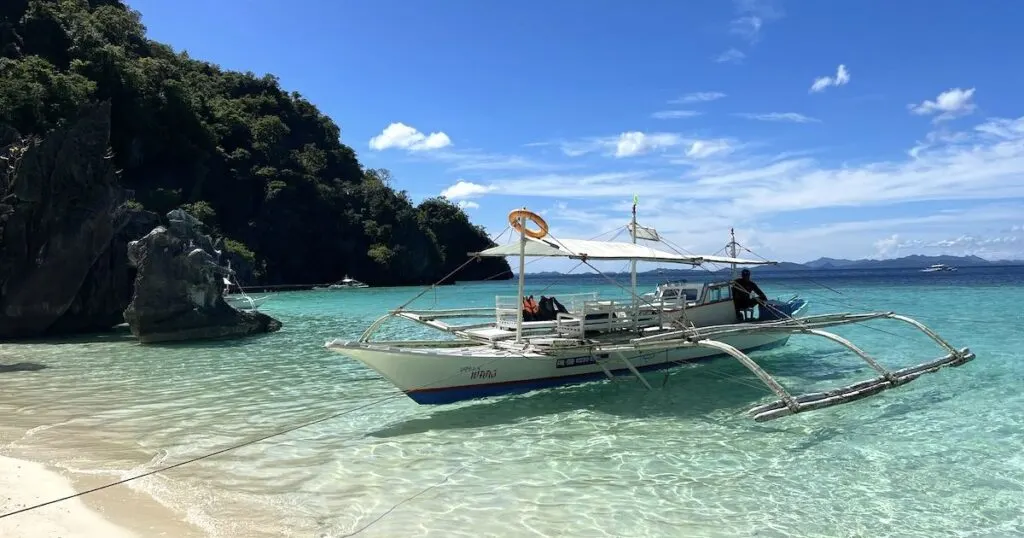
2. Bring cash for entry fees and add-ons
You can check the fine print of your island hopping tour in Coron to see what is and isn’t included in your tour.
Most of the time, the main entry fees for attractions are included in the tour. However, add-ons such as kayaks and snorkelling equipment rental may be applicable.
Lunch is typically included in group tours but excluded in private tours. It goes without saying that you’ll need to pay for any add-ons, entrance fees, or food in cash. There are no card machines on the boats.
3. Pack your dry bag
If you’re wondering what to wear in Palawan and island hopping, I have a full guide that sets out the do’s and don’ts.
A dry bag is essential when island hopping because there is a high chance that your belongings could get wet from the boat’s spray, dripping guests, or wet snorkel or kayaking equipment
To summarise, you should bring or wear:
- Comfortable sandals or flip flops
- Reef shoes
- Sunglasses
- Swimwear
- A change of clothes or cover-up
- Lightweight towel
- Suncream
- Cash
- Optional: your own snorkelling gear
4. Allow time for your journey to the port
Unless your tour includes free pick-up from your accommodation, don’t forget to allow time for your journey to the port in Coron.
The port is located a five- to 10-minute drive from most of the hotels in Coron town, but it is further away from hotels on the outskirts of Coron or on another part of Busuanga Island.
Traffic can be busy around Coron during the morning. Plus, tricycles move slower than you think, if that’s your main form of transport to the port.
You may need to pre-arrange for a taxi or tricycle with your accommodation or allot some time to find a driver and haggle for a reasonable price.
You should expect to pay around 20 PHP for a 15-minute tricycle ride from the town to the port.
Travel insurance is essential for any trip abroad. If you’re in an accident or experience an emergency, you need adequate cover. I recommend Staysure for single or multiple trips per year and SafetyWing for digital nomads.
What to expect on Coron Island Hopping Tours
1. An early start
Coron island hopping tours typically depart at around 8am from Coron port. It takes around half an hour to an hour to sail from Coron to some of the island hopping destinations.
You also need to account for the journey time to the port, which can take around half an hour by tricycle.
2. Incredible scenery and photo opportunities
You’ll probably be raving about the things you see in Coron for a long time to come – or posting about them on Instagram, at least.
Limestone peaks and green hills rise from the ocean in all directions, providing the perfect backdrop and photo opportunities for your cruise.
3. Great coral gardens and wreck sites
Coron has a number of colourful coral gardens. They are some of the best I’ve seen on my travels. I’ve even gone so far as to say that I preferred some of the coral gardens in Palawan to the Great Barrier Reef in Cairns, Australia.
The wreck sites are just an added bonus. There’s nothing quite like gliding over a boat encased in corals and barnacles. If you’re going wreck diving, even better.
4. Crowds
Where there is beautiful scenery, corals, and beaches, there are also tourists. Coron is quickly increasing in popularity as a tourist destination in Palawan and the Philippines.
Still, there are less crowds in Coron than in El Nido. If you prefer not to compete with throngs of people, Coron is the more peaceful destination.
You’ll find less crowds on Tour C, which visits remote beaches rather than the most popular tourist sites. You can also avoid crowds easier on a private tour.
5. Barbecued local lunches
Group tours include a delicious barbecued buffet lunch, featuring seafood, chicken, pork, and salad or vegetable dishes with fresh tropical fruits. Private tour guides will also happily cook you a fresh local lunch from ingredients brought from the morning market at Coron port.
The spread is so ridiculously extensive and well-prepared that the lunch quickly became one of my highlights of booking a Coron island hopping tour for me.
The guides are very artistic in their presentation. Expect to receive carved pineapples in the shape of a bird, cucumber spirals, and carved fruit turtles.
The Best Coron Island Hopping Tours
There are four main Coron island hopping tours, labelled A, B, C, D, and the Coron Ultimate Tour.
If you’re limited on time, the Coron Ultimate Tour is specifically designed to cover the most popular sites in one fell swoop. It visits Kayangan Lake, Twin Lagoon, Sunset Beach, Siete Pecados (coral garden) Skeleton Wreck, and CYC Beach.
However, the downside is that it is fast-paced and seems more about ‘ticking boxes’ than really experiencing the sites.
If you really want to experience Coron and its surrounding islands, tours A, B, C, and D are slightly slower-paced.
Tour A and B are the most popular tours. Tour A visits Kayangan Lake, thought to be the cleanest lake in the Philippines and possibly in southeast Asia.
Tour B visits Barracuda Lake and Twin Lagoon, two other immensely popular sites famed for their underwater cliffs and free-diving or snorkelling.
Tour C is the best option for a relaxed beach day on Coron’s remotest islands.
Tour D is the best option for those who want to snorkel over Japanese shipwrecks which sank in Coron Bay during World War II.
Ideally, you’ll have time for all four tours. If not, you’ll need to decide what are the most important things for you to see and how much snorkelling or relaxing you want to do.
Coron Ultimate Tour: Kayangan Lake, Twin Lagoon, Sunset Beach, Siete Pecados (coral garden) Skeleton Wreck, and CYC Beach
Best for: A jam-packed itinerary visiting Coron’s most popular locations and a World War II wreck.
The Coron Ultimate Tour gives you the biggest bang for your buck.
It pretty much fits in all of the most popular tourist sites in Coron, along with one of the best coral gardens for snorkelling, a beach, and a World War II shipwreck.
It visits Kayangan Lake, the cleanest lake in Palawan (and perhaps in Asia). Just like the next stop, Twin Lagoon, it has underwater limestone cliffs ideal for free-diving, snorkelling, or simply floating and enjoying the scenery.
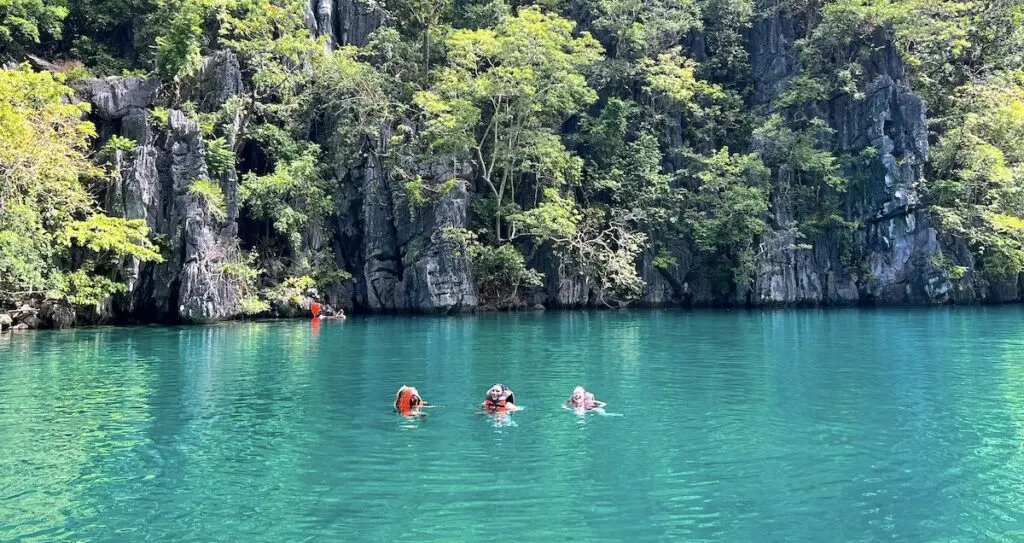
Kayangan Lake
The only thing is, Coron Ultimate Tour does not visit Barracuda Lake, one of the most popular (and on the rise to be THE most popular) sites in Coron. The island hopping tour is also very fast-paced, leaving little time for you to enjoy each place before you’re shuttled off to the next.
If you’d prefer to spend more time rather than feeling rushed from one place to the next, you may want to pick two to four of the A, B, C, and D tours to take things at a slower pace.
Check the availability for the Coron Ultimate Tour.
Tour A: Kayangan Lake, CYC Beach, Sunset Beach, and Las Islas De Coral
Best for: Visiting Kayangan Lake and snorkelling at a powdery beach.
Visiting Kayangan Lake is a must for many people visiting Coron. Why? It’s supposedly the cleanest lake in the Philippines, and some argue, in the whole of southeast Asia.

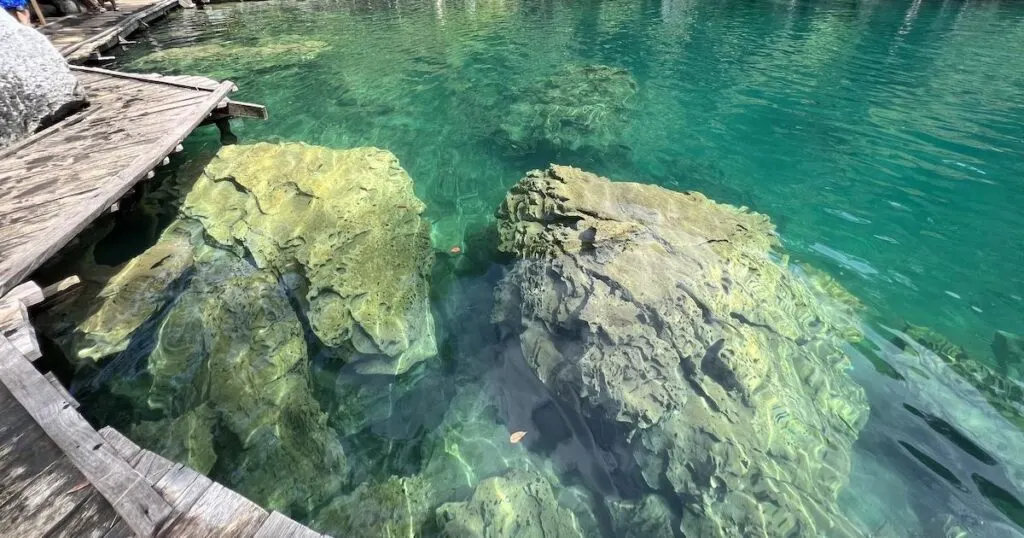
Kayangan Lake, Coron
A translucent turquoise shade, Kayangan lake is made up of only 30% saltwater and the remainder freshwater. The lake is full of tiny silver needle fish; if you stay still long enough, they’ll cosy up to you.
There are small caves within the water, located on the left-hand side as you enter the boardwalk.
The lake is also popular for free-diving, because it has underwater limestone cliffs and crevices, although the rule is that every swimmer must have a life vest in the water with them at all times.
To reach Kayangan Lake, there is a 10-minute stair climb. It passes a viewpoint over a small seaport and green limestone cliffs. The view is almost as popular as the lake itself.
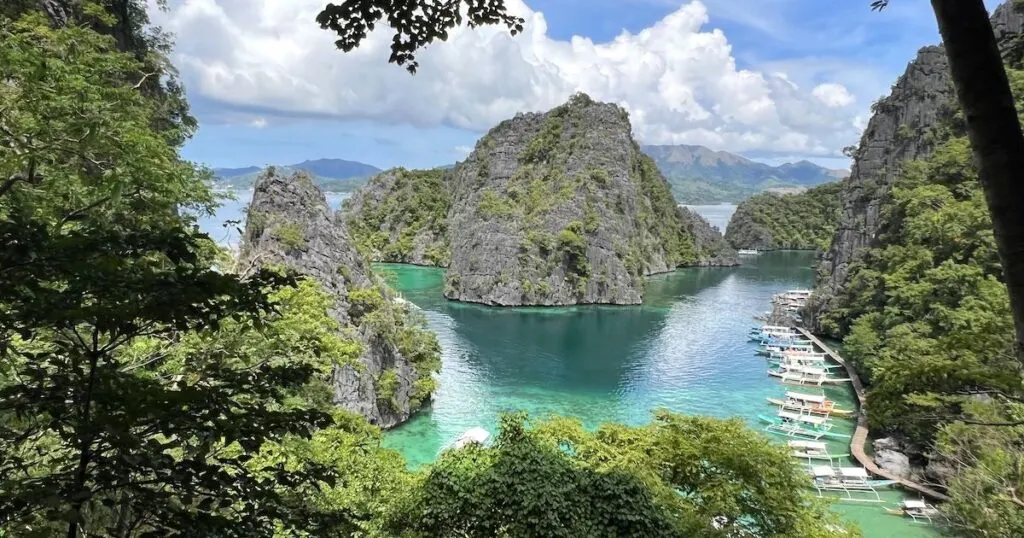
Viewpoint near Kayangan Lake, Coron
Tour A’s main attraction is Kayangan Lake, but it also visits two of Coron’s most popular beaches.
CYC Beach is a small cove with silky white sand. It’s located on a tiny island surrounded by mangroves and small corals suitable for snorkelling over.
The coral garden, named Las Islas De Coral, is best-known for its multicoloured corals and fish.
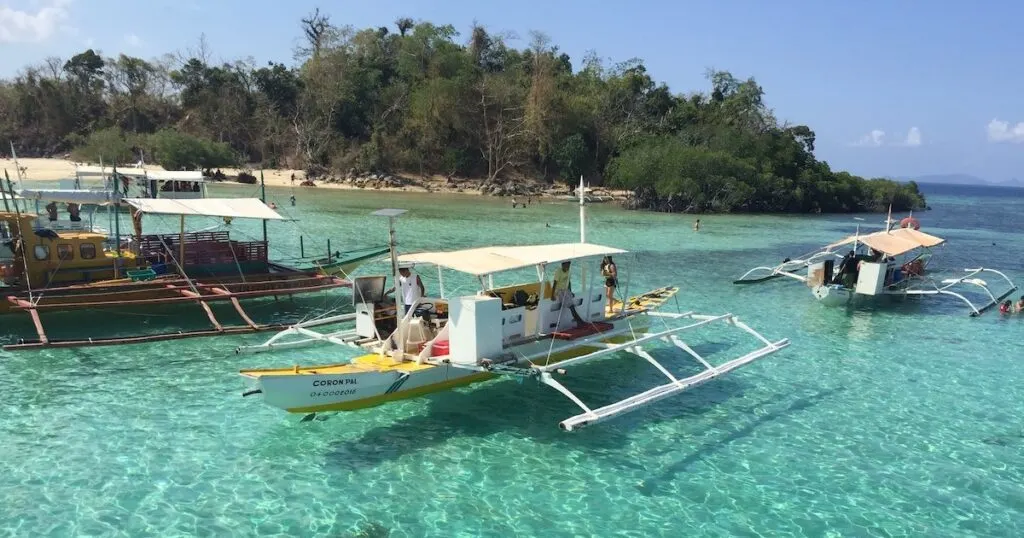
CYC Beach
The tours normally stop at Sunset Beach for lunch. It’s very similar to CYC Beach, but it is lined with wooden shacks and picnic benches for people to eat.
Check the availability for Tour A.
Tour B: Barracuda Lake, Twin Lagoon and Smith Beach
Best for: Visiting popular lakes and lagoons and a shipwreck
If you’re keen to free-dive or snorkel in some of Coron’s most popular lagoons and lakes – and a shipwreck is just another bonus in your eyes – Tour B is the tour for you.

The Twin Lagoons and Barracuda Lake
The tour begins by visiting Barracuda Lake, a lake with jagged underwater limestone formations ideal for snorkelling or shallow free-diving.
The deeper you dive, the warmer the lake feels due to the combination of fresh and saltwater. Freediving is actually banned for the safety of the majority of tourists, but experienced and confident free-divers may want to try some shallow dives out.
Skeleton Wreck is the next (and well-awaited) stop-off. The Japanese warship, which is now layered with coral and barnacles, sunk during World War II. Tour B also visits a second reef garden.
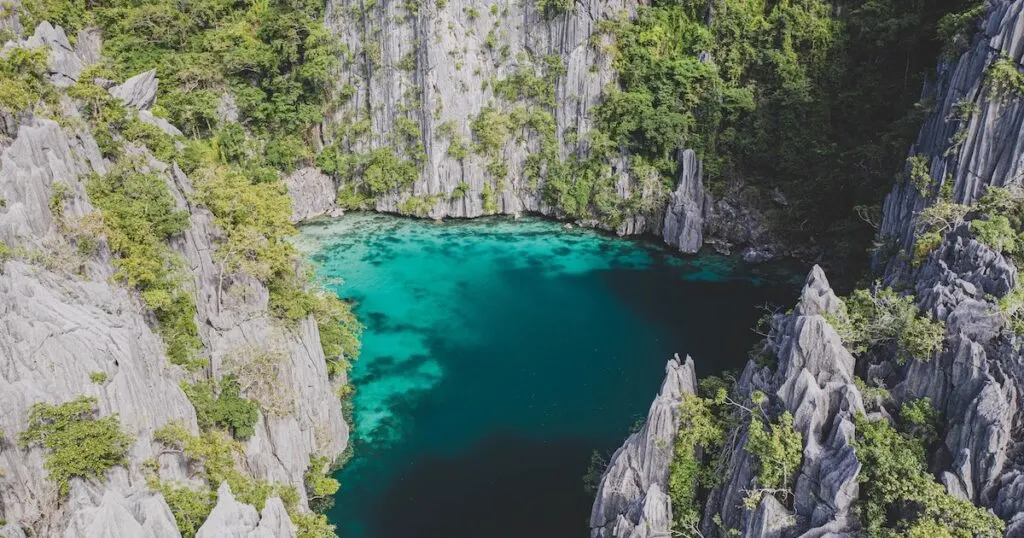
Twin Lagoon
Twin Lagoon is also a key item on the itinerary. This destination consists of two clear lagoons separated by jagged limestone cliffs. Because the lagoons are so shallow, the main way of exploring is by kayak, although you can swim in the deeper areas.
Check the availability for Tour B.
Tour C: Malcapuya Island and Ditaytayan Island sand bar
Best for: A relaxed day visiting beaches, coral gardens and a sandbar (family-friendly too!)
Sometimes you just want to take things easy, and this is the tour for that.
If you can’t get enough of white sands and you simply want to lay among the powder all day long (with the exception of stopping at a coral garden for some snorkelling), Tour C is a great option.
It begins by visiting Malcapuya Island, one of the most deserted beaches in Coron. The shallow water is ideal for swimming (or floating), and very family-friendly.
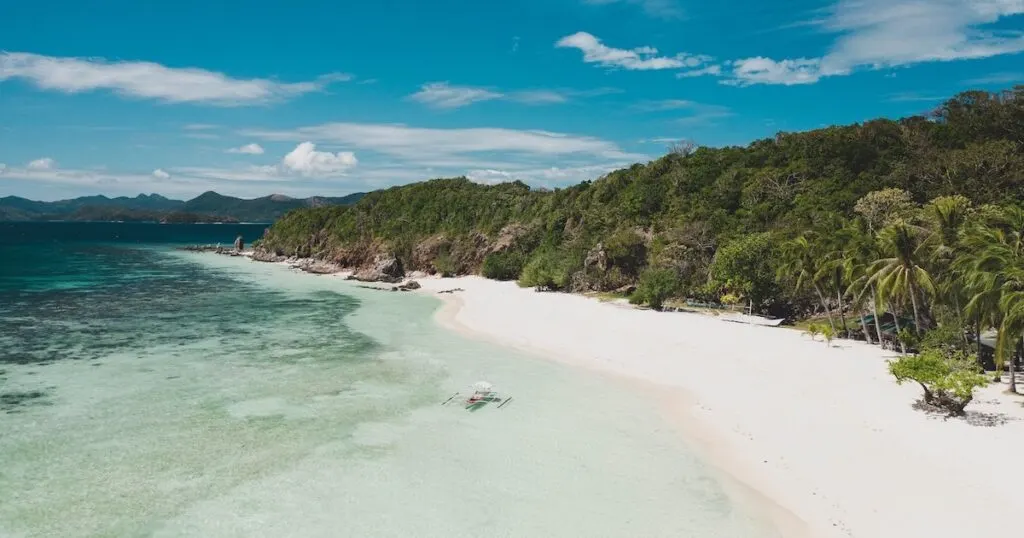
Malcapuya Island
Ditaytayan Island is another of Coron’s more peaceful spots. The island has a lengthy sand bar, bordered on both sides by warm, shallow swimming waters. Here, you can sunbathe with the water on either side and a gentle breeze passing over at all times.
Check the availability for Tour C.
Tour D: East Tangat Wreck, Lusong Gunboat Wreck, and Lusong Coral Garden
Best for: Snorkelling over two World War II shipwrecks.
Coron Bay is scattered with sunken Japanese war ships from World War II. Some are shallow enough to snorkel over, while others are perfect for divers to explore.
Tour D is the best way to explore the World War II wrecks in Coron and get clued up on the war history in the area. Both wrecks have been left to linger in the ocean so long that they’re now covered in corals and barnacles, which attract colourful schools of fish and other sea critters.
The tour also stops at Pass Island, which has soft silica sand known for its exfoliating properties.
Lusong Gunboat is the first wreck on the itinerary, and one of the most famous around Coron. The ship met its demise after being hit by bullets from a machine gun, before crashing on the beach and eventually being swept just offshore.
Pufferfish, batfish, and angelfish are regular visitors to the wreck’s soft corals. Better yet, the wreck is also close to the large Lusong Coral Garden, one of the best in Coron.
The second wreck on the tour, East Tangat, is a 40-metre tugboat or anti-submarine boat (experts aren’t quite sure) which sank in September 1944. Weighing 500 gross tons, it is planted on a sandy underwater bank in shallow water.
There aren’t as many corals on this wreck, but nevertheless, it attracts fish like butterflyfish, sea stars, and angelfish. This is my favourite wreck because the visibility is often very good and you can see the many contours of the boat.
Check the availability for Tour D.
Coron Island Hopping Tours: How to Rent a Private Boat in Coron
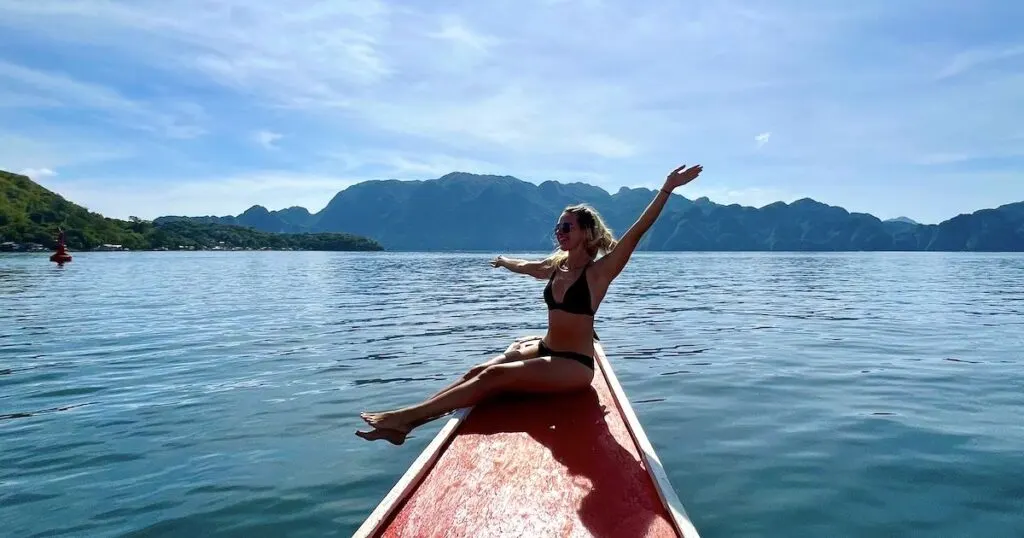
If you ask the right people, it’s possible to rent a private boat and guide in Coron for a reasonable price. I managed to do this with two friends by asking my hotel staff.
Your success rate will depend upon your/their connections and your success at haggling. You can rent a speedboat or yacht instead, too.
This gives you the chance to visit places that are not covered on the typical tour routes in Coron. Below I’ve listed a couple of locations that we visited during our time island hopping in Coron.
If you take a private tour (A, B, C, or D), you can also request to change one of the stops to one of the following locations, which aren’t included in the typical tours.
It will depend upon whether the new destination is in the same area or far away from your other stops, so ask early on into the tour.
Banul Beach
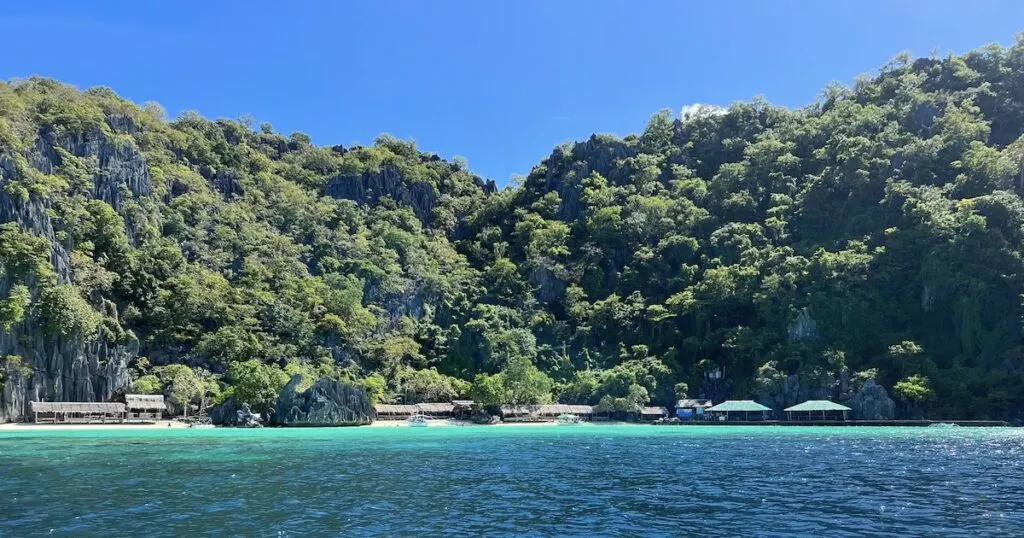
Banul Beach is by far my favourite beach in Coron. I’d go so far as to say that it’s my favourite beach in Palawan.
The shallow waters must have a very high concentration of salt, because it’s incredibly easy to float on your back for minutes at a time. The water is very shallow, and the sand is perfectly powdery. There’s also a small coral garden.
With wooden huts and picnic benches set up for shade and passing boats to stop for lunch, it’s an excellent place for a lazy day without too many crowds.
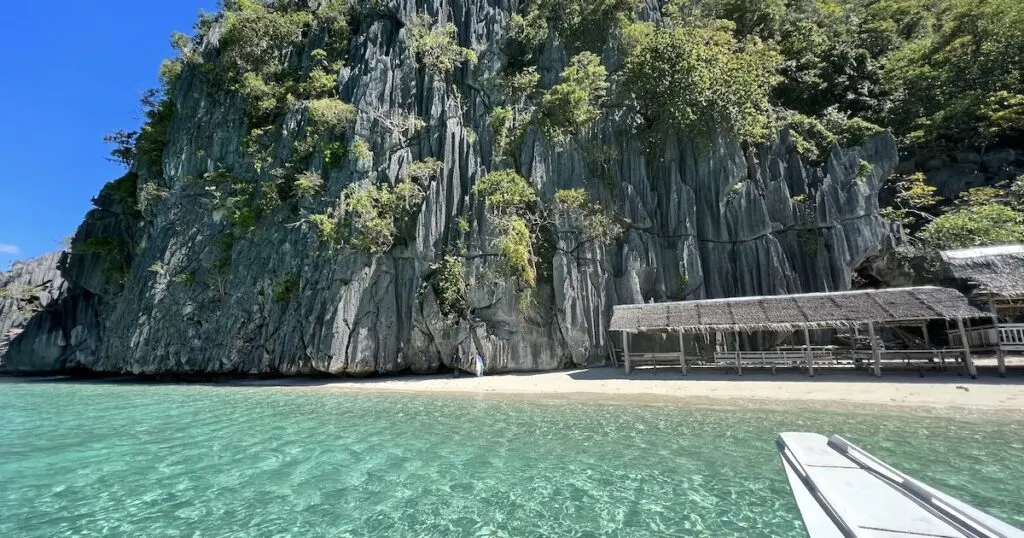
The beach is empty in the morning, and even at lunchtime, it’s not as busy as the main beaches featured in the Coron A, B, C and D tours. There are toilets on top of the hill, so you can spend an entire day here if you wish, just like I did.
Banul Beach is between Sunset Beach and Twin Lagoon, making an easy additional stop on Tour B.
Hidden Lagoon

One of my tour guides let me in on the secret of Hidden Lagoon. If you want to avoid the crowds at Twin Lagoon, this is your place. It’s smaller than Twin Lagoon, and when we were there first-thing in the morning, we had it completely to ourselves.
Jump into a kayak and glide over the shallow waters, spotting sea urchins and manoeuvring through a mangrove forest. You can even take a lap of the limestone bay and corals outside of the lagoon.
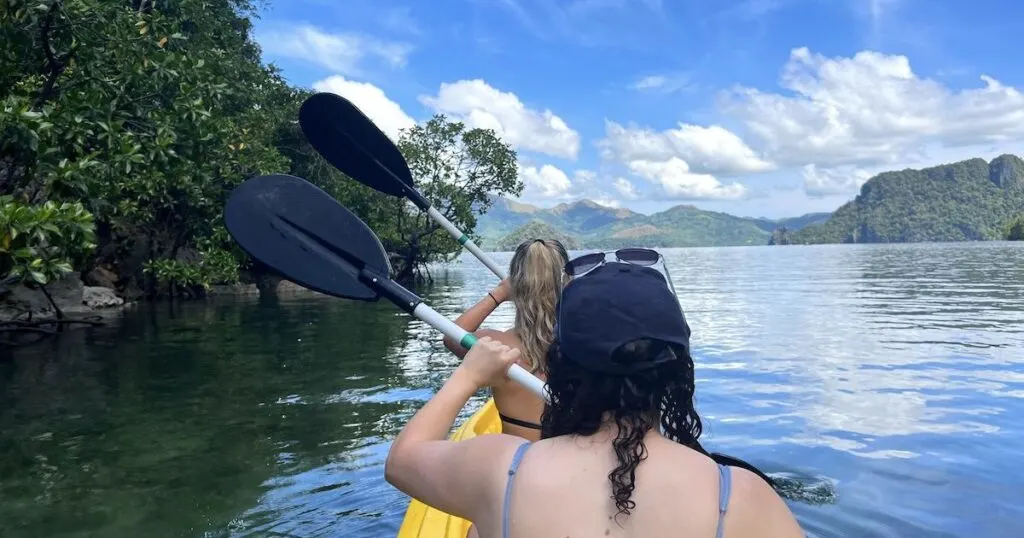
Hidden Lagoon is only a 10-minute boat ride from Kayangan Lake, so it makes an easy addition to Tour A.
Things to do in Coron Town
1. Climb Mount Tapyas
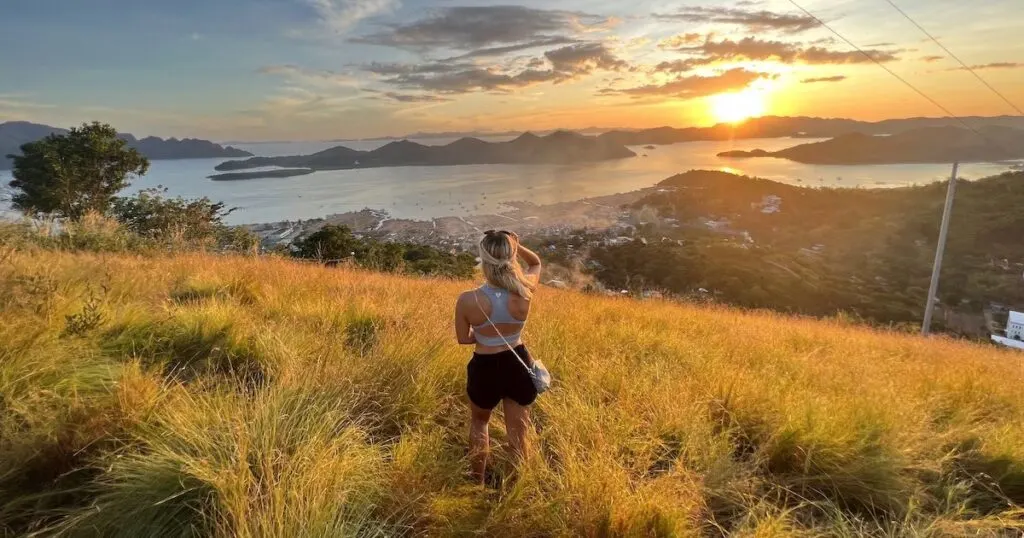
Island hopping tours are the main thing to do in Coron. However, you won’t spend all of your time on the water.
Most island tours return just in time for you to fit in a sunset climb up Mount Tapyas, the hill which overlooks the town. You can spot the large ‘Coron’ sign and cross on the hill from miles off while cruising in the bay.
Mount Tapyas is only 210 metres high, so it’s a relatively entry-level climb. It helps that the entire distance is covered by a concrete staircase, so no scrambling is required.
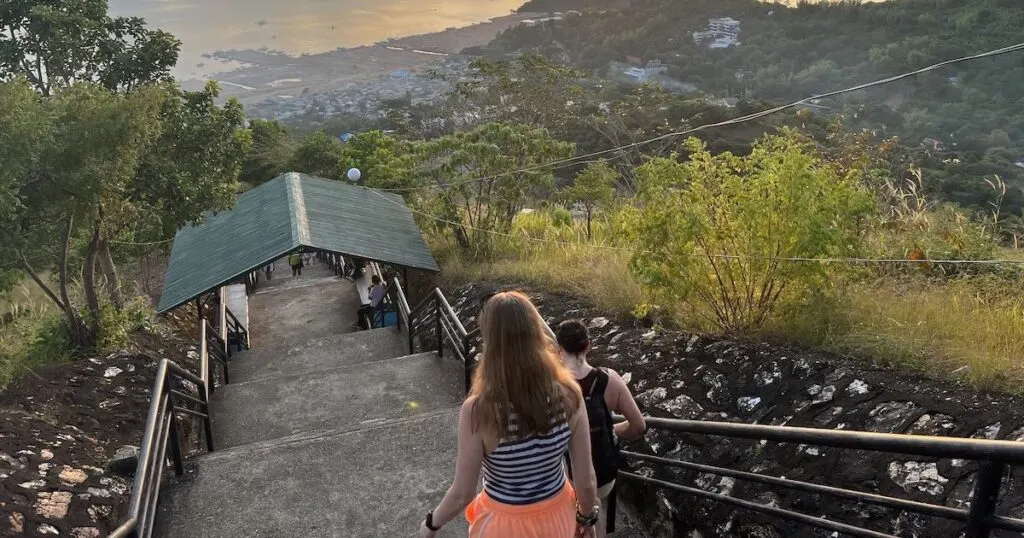
The viewing deck has views over the town, ocean, port, and the exact islands which host your island hopping.
Stray from the viewing deck onto the hill, where there is long grass which takes on a golden hue in the sunset.
2. Visit the Maquinit Hot Spring
Maquinit Hot Spring doesn’t require any island hopping. Located half an hour’s tricycle ride from Coron, the hot springs are heated by an underwater volcano (don’t worry, not the type that will erupt).
It’s a popular place to visit at night, after climbing Mount Tapyas.
The springs are approximately 36 to 40°C, and the silica in the water can help to relieve dry or cracked skin. Who needs a hot tub or a sauna for a detox?
3. Explore the town
Not many take the time to explore within Coron town. However, the town has an interesting number of historical sites, as well as a distinct culture.
St. Augustine Church is the only Catholic church in Coron. It has high, white ceilings and a pulpit honouring the patron saint St. Augustine. The Town Plaza is another community hub.
A town tour will take you to the cultural landmarks of Coron, including a small family-run cashew factory on the way to the Maquinit Hot Spring.
Transport to Mount Tapyas and Maquinit Hot Spring is arranged via an air-conditioned van, saving you the trouble of a dusty, bumpy tricycle journey.
Check the availability for a Coron town tour.
4. Go parasailing
Parasailing, in my eyes, is the sort of good old-fashioned fun that never gets old.
And what could be a better place to go parasailing than in Coron Bay, where you’ll have views of Coron’s limestone islands, the rows of bangka boats in the port, and the distant green mountains?
Check the availability for parasailing in Coron.
Coron Island Hopping Tours: Where to Stay in Coron
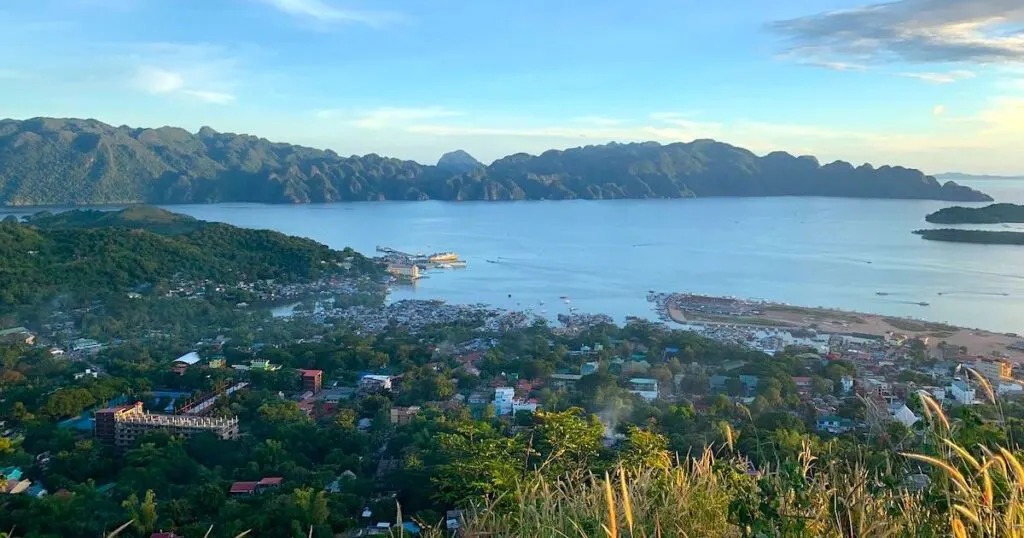
Most backpackers stay at Hop Hostel. In fact, it’s so popular that it is regularly sold out months in advance.
The second go-to hostel, rated highly for its cleanliness and social areas, is Michel’inn Coron.
If you’re treating yourself to a luxury break in Coron, then you absolutely must look at the Two Seasons Coron Bayside Hotel on the right-hand side of Coron Bay. It has its very own turtle and giant clam sanctuary.
The Funny Lion is another popular luxury hotel in Coron, situated in a more central location.
Coron is packed with mid-budget hotels too. The difficulty is finding a good-quality, clean, and mosquito-free hotel for a good price.
The good ones sell out way in advance, so I’d recommend taking a look early and taking advantage of a free cancellation policy should you need it.
Some of the best mid-budget hotels are:
Where to Visit After Coron Island Hopping Tours
1. Lincapan
Lincapan, no doubt about it, is Palawan’s most underrated island. It has some of Palawan’s most pristine coral reefs, partly because it’s so far away from Palawan’s main islands and towns and the corals haven’t been damaged by irresponsible tourists or boats.

Sleeping in a hut on a remote island near Lincapan
The only way to visit Lincapan is by taking an island hopping tour from Coron to El Nido (or the reverse, from El Nido to Coron). These trips range from between three to five nights and involve travelling by a traditional bangka boat, snorkelling and cliff diving all day, and sleeping in a handmade hut on remote islands.
Island hopping in Lincapan is so special that I’ve done it twice, once in 2018 and again in late 2022. Both times I travelled with Tao Philippines.

The organisation uses some of their earnings to support the local island communities by providing education, employment, and promoting sustainable fishing and farming rather than damaging slash-and-burn methods.
2. El Nido
El Nido is the most popular next destination for people who visit Coron. Its lagoons are huge compared to those in Coron, and a few are completely or partially concealed by high karst cliffs.
Coral reefs and high-quality beaches are, of course, another big draw. Its dive sites are also epic, and include an underwater tunnel and cavern at Dilumacad Island.
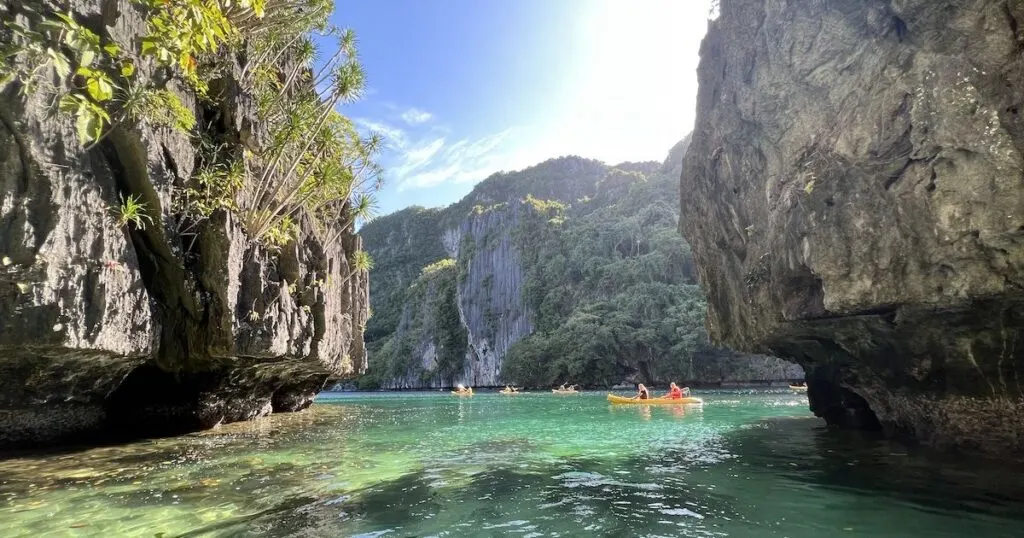
Big Lagoon, El Nido
The Taraw Cliff, a collection of sharp limestone rocks, towers over the town and bay. The cliffs have a canopy walk, a collection of stairs and boardwalks, which lead to the viewpoint.
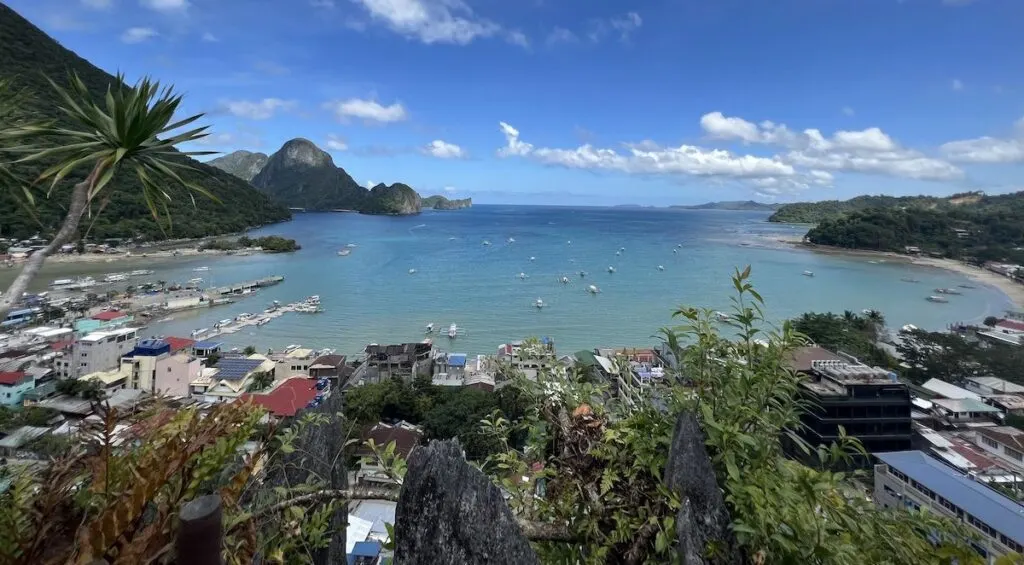
There are also a number of luxury private island resorts a short boat ride from El Nido, including the Cauayan Island Resort and Spa and Matinloc Resort, making it popular for honeymooners and luxury travellers.
Before you go, check out my blog post on the best El Nido tour.
From El Nido, you can continue southwards through Palawan to visit Puerto Princesa, where there are cheap flight connections to other destinations in the Philippines (including Manila).
In Puerto Princesa, there’s not much to do in the city, but you can visit the UNESCO World Heritage Site of the Puerto Princesa Subterranean River National Park located 80 kilometres north of the city.
The limestone karst underground river is more than 15 miles long, making it the second longest underground river in the world. Its ecosystem is extraordinary.
I took this full-day tour of the Puerto Princesa Subterranean River from the city.
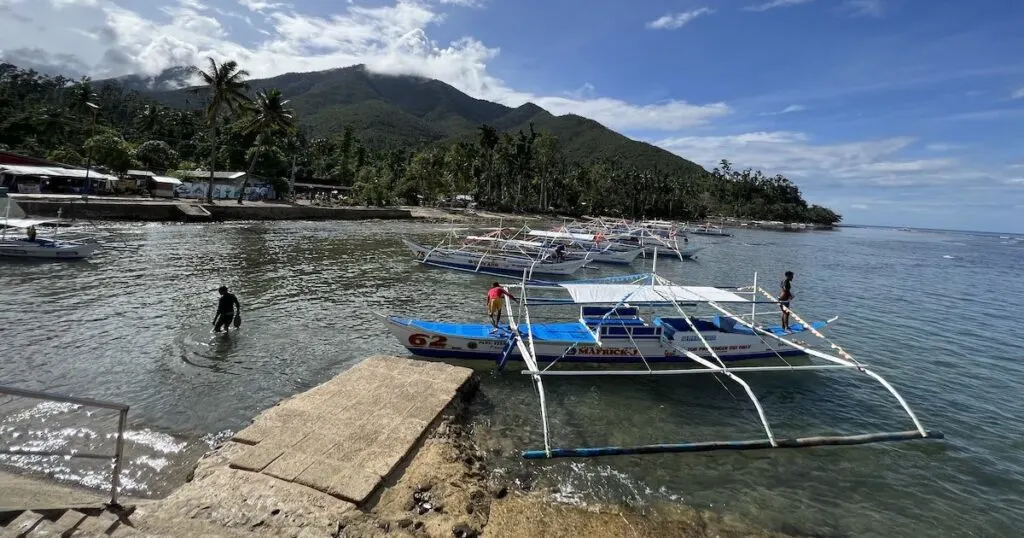
Sabang, the departure point for the underground river
FAQ
Three days in Coron is enough to take two or three island hopping tours. If you want more time to take things at a slower pace, spend up to 5 days or a week in Coron.
A Coron group boat tour costs approximately 3000 PHP. A private group tour in Coron costs approximately 5,000 to 7,000 PHP.
AUTHOR
Katie Treharne
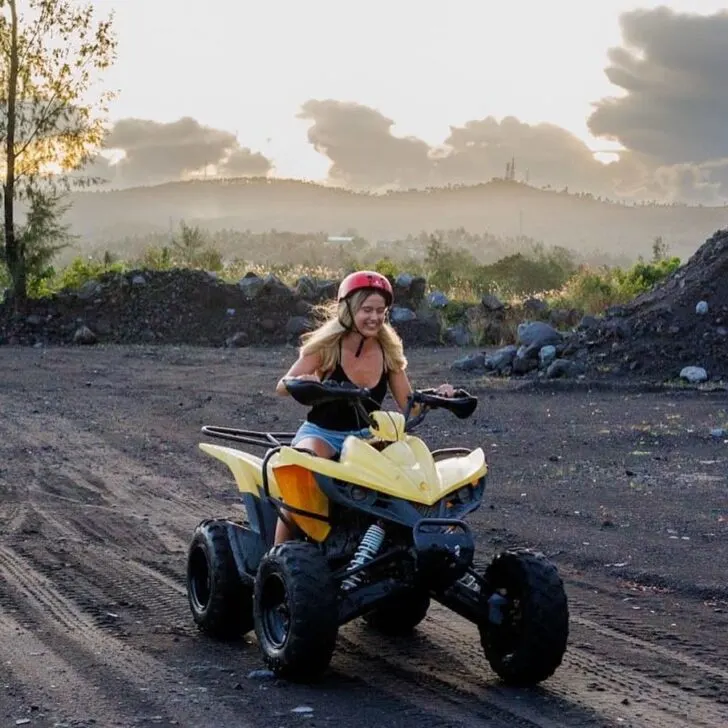
I’m Katie, the owner of Escape Artist Katie. I have been travel writing since 2018, including writing for luxury travel magazines and publications such as Wanderlust.
As well as being a digital nomad who works and lives abroad permanently, I’m a big advocate for offbeat travel and pushing yourself out of your comfort zone.
I hope you found my article useful – find out more about me here or keep up with my travels on Instagram.

